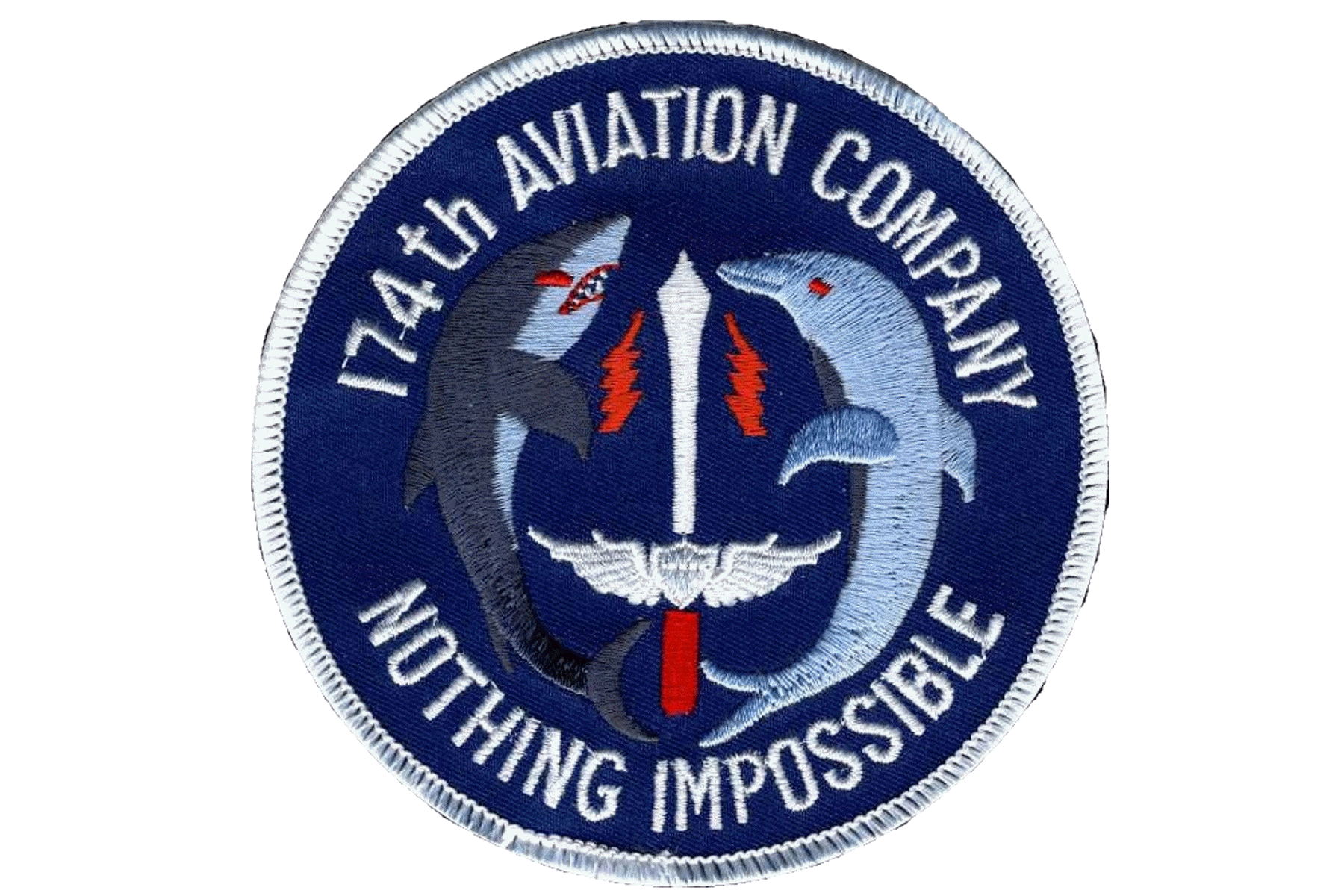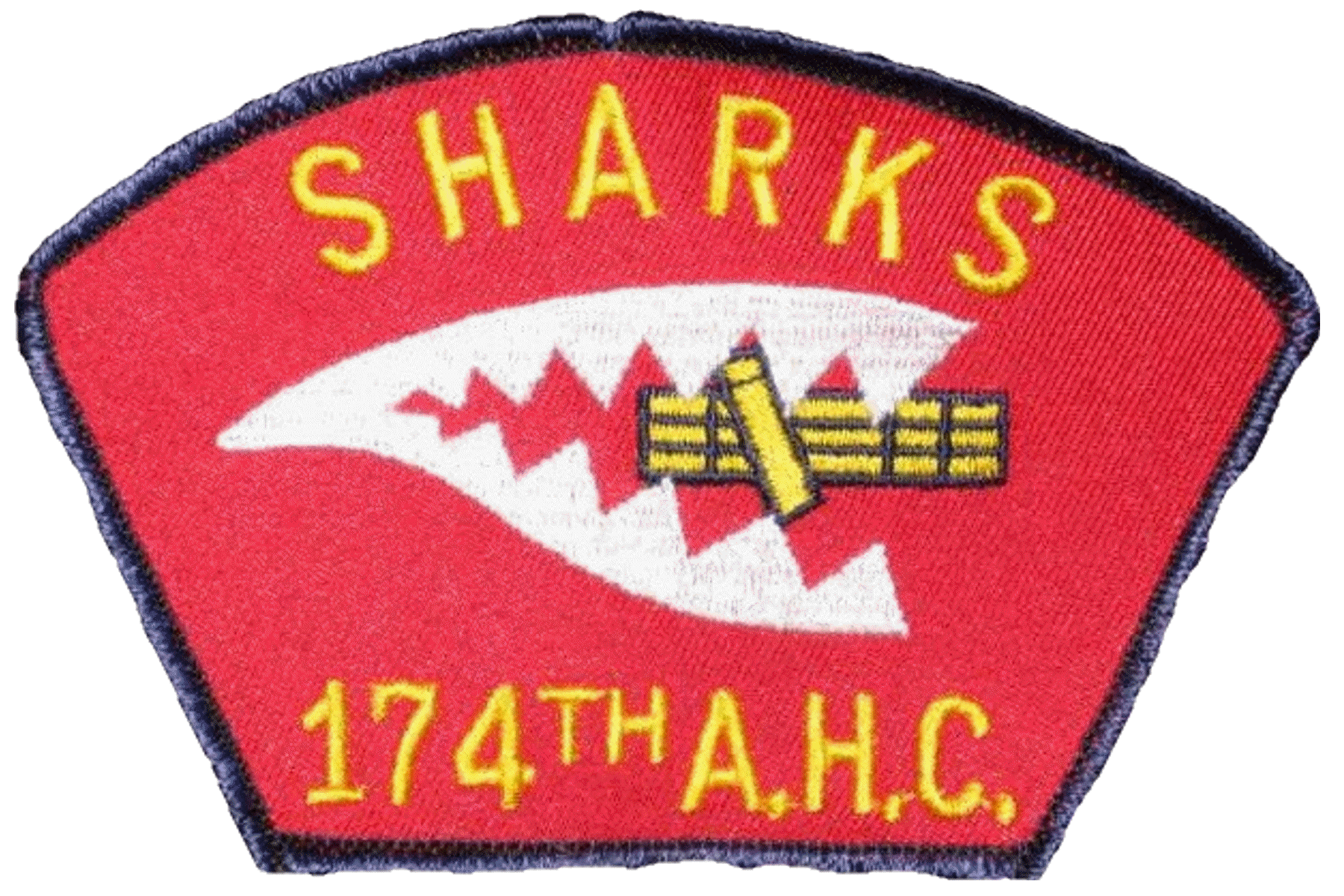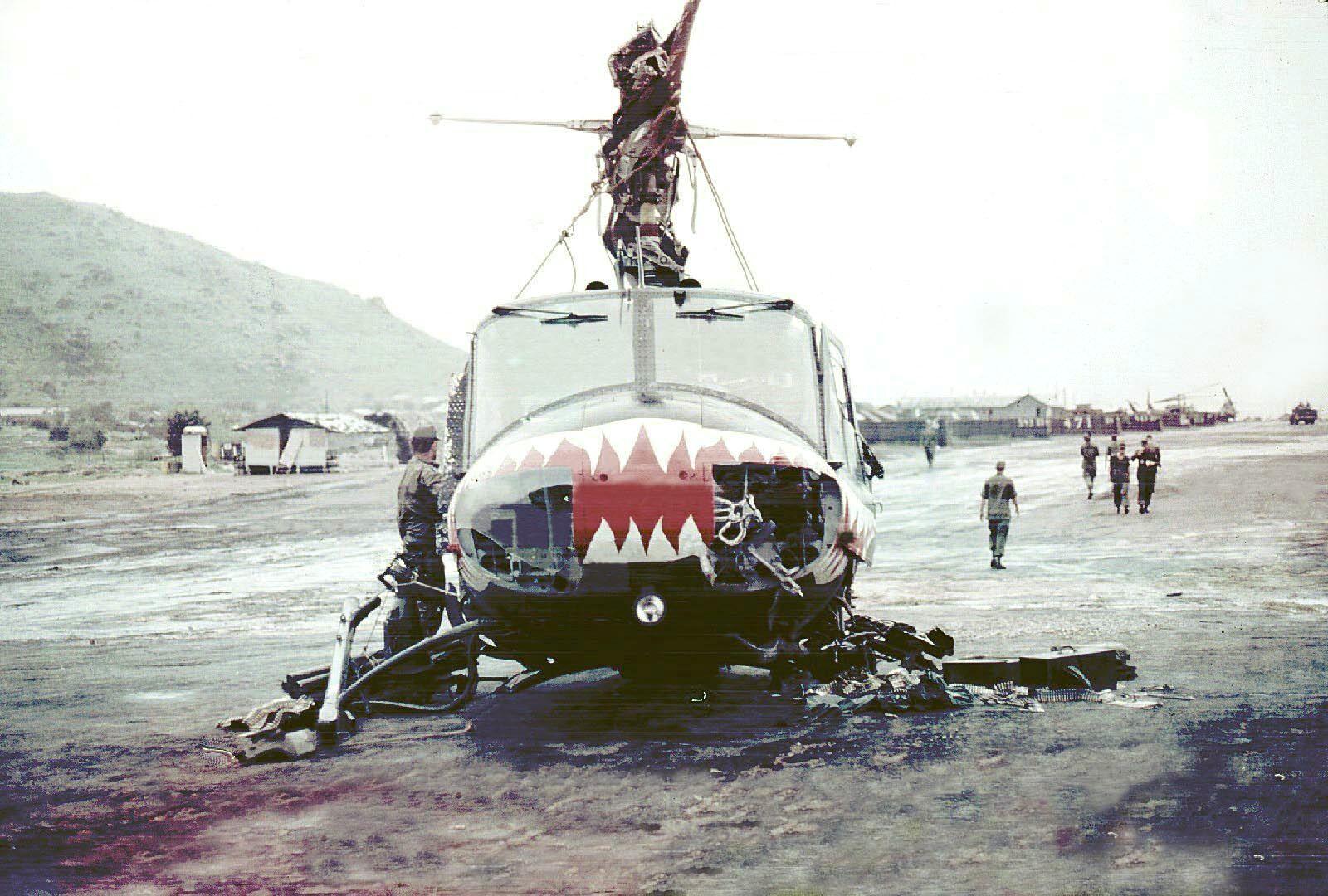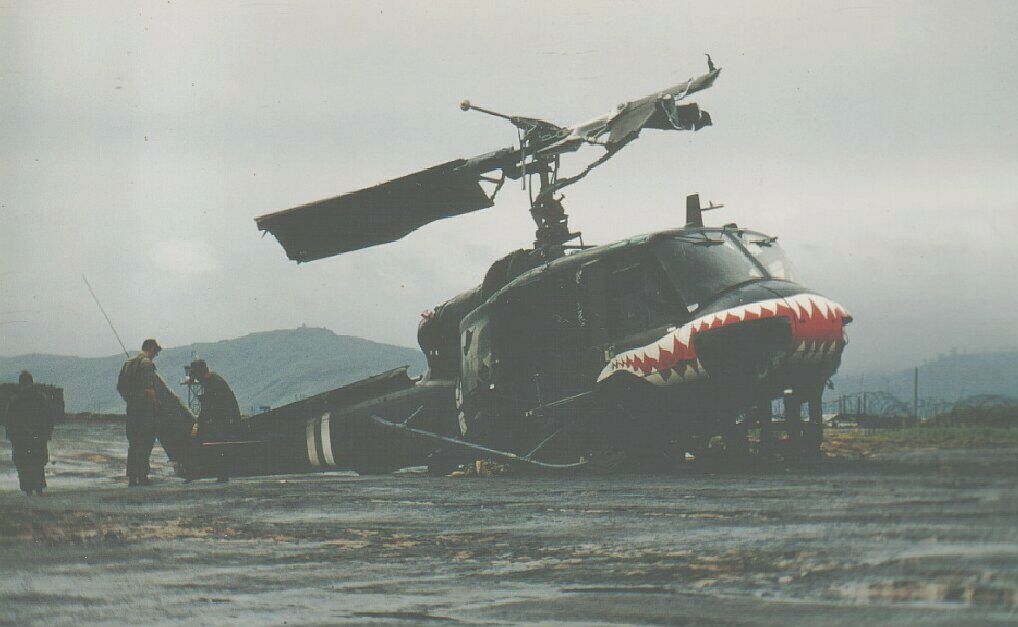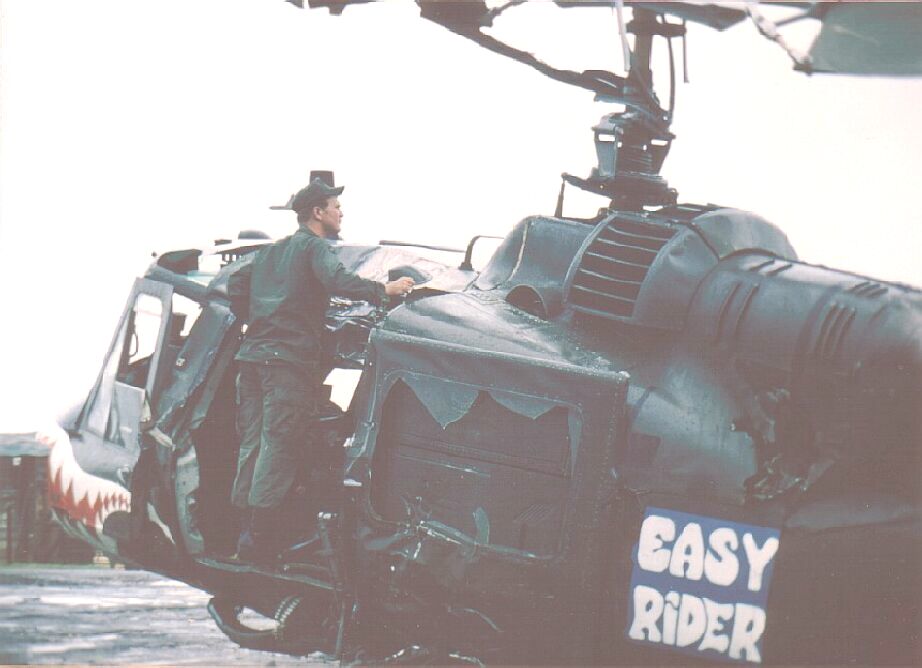174th Assault
Helicopter Company
DOLPHINS & SHARKS
 Click here
Click here  to write us at the website
to write us at the website 
|
These seven photos
of "Easy Rider" ( UH-1C 66-15045) were taken at the Rearm point at Duc Pho in
November 1970- after CW2 Greg Manuel and 1Lt. Bob Hackett went down at night
in the Rice Bowl. (The Rice Bowl was a well known area south of Duc Pho near FSB Debbie.) Despite the fact they hit a tree with the tail rotor
while low-level--AND that the crewchief's seat belt broke, actually
sending him rolling across the rice paddy--everyone walked away from the crash. "I was Aircraft Commander of a Dolphin that was on 'Second Flare' that night. The weather was 500 feet, overcast, and shitty. 'First Flare' went inadvertent IFR (Instrument Flight Rules--meaning they flew into the clouds). I was notified about it when someone came down into 'The Hole' (my hootch) to get me. Duc Pho GCA (Ground Control Approach) was struggling to get on the air to help 'First Flare' get back down (provide them radar guidance back to Duc Pho). Because 'Second Flare' NEVER goes (kind of an inside joke), they'd assigned 1LT Terry Hays as my Peter Pilot. The poor guy had only been in-country about a week. We launched and soon discovered that 500' was the best we could do. We had to set the flares to '0' since the next setting was 500'. This meant they'd go off as soon as they hit the end of the lanyard attached to the aircraft. Easy Rider's wingman, the second Shark, was securing the crashed gunship, and a second gun team was on the way. Meanwhile, the grunts were running toward the crash site and there were dinks everywhere." (continued below)
|

"...On the radio, it was chaos: The Sharks and I were coordinating my flare pattern on UHF, the ground unit on FM was talking to me, and me again on VHF struggling to contact the Air Force 'Basketball' flare aircraft, a C-130 out of Da Nang, on it's way in the clear skies at 10,000.' All three radios were burning the airways at once!Because we couldn't get higher than 500 feet, our flares only helped a little since they'd only be able to burn a few seconds before hitting the ground and mimicking the 'China Syndrome,' where they'd ignite ANYTHING. The grunts enjoyed this since my pattern was lighting off the village where the bad-guy dinks were hiding. Other illumination came from the Four-Deuce (4.2-inch) mortar unit on nearby FSB Debbie. That was the GOOD news. The BAD news was that the pattern of the mortars was directly overhead!, and the flares, their parachutes, and their ejected metal casings were joining the liquid rain already falling on us..."
|

"...FINALLY, the Basketball aircraft arrived and I vectored him in. By now the downed Shark's wingman had plucked up the crew and had taken them back to Duc Pho. With Air Force lighting on the scene and my fuel lower than might be pleasant for climbing to 4,000' feet in solid clouds for vectors to the Duc Pho GCA final approach course, I headed back myself below the scud.Once back, I made Hays stay in the aircraft while we fueled (remember, one pilot had to get out for that operation and it was usually the new guy), and I think I kissed the ground more than a few times. I was just tired. Very tired..."
|

"...The next day, a Boxcar Chinook (178th ASHC out of Chu Lai) slung out the
wreckage and dropped it where I shot these pictures. The guy in the
background in my photo through the cargo compartment is WO1 Michael
Phillips, another FNG who arrived about the same time as Terry Hays."- David Rosenthal
(All B&W Photos and story by David Rosenthal, Dolphin 24, 1970.) |

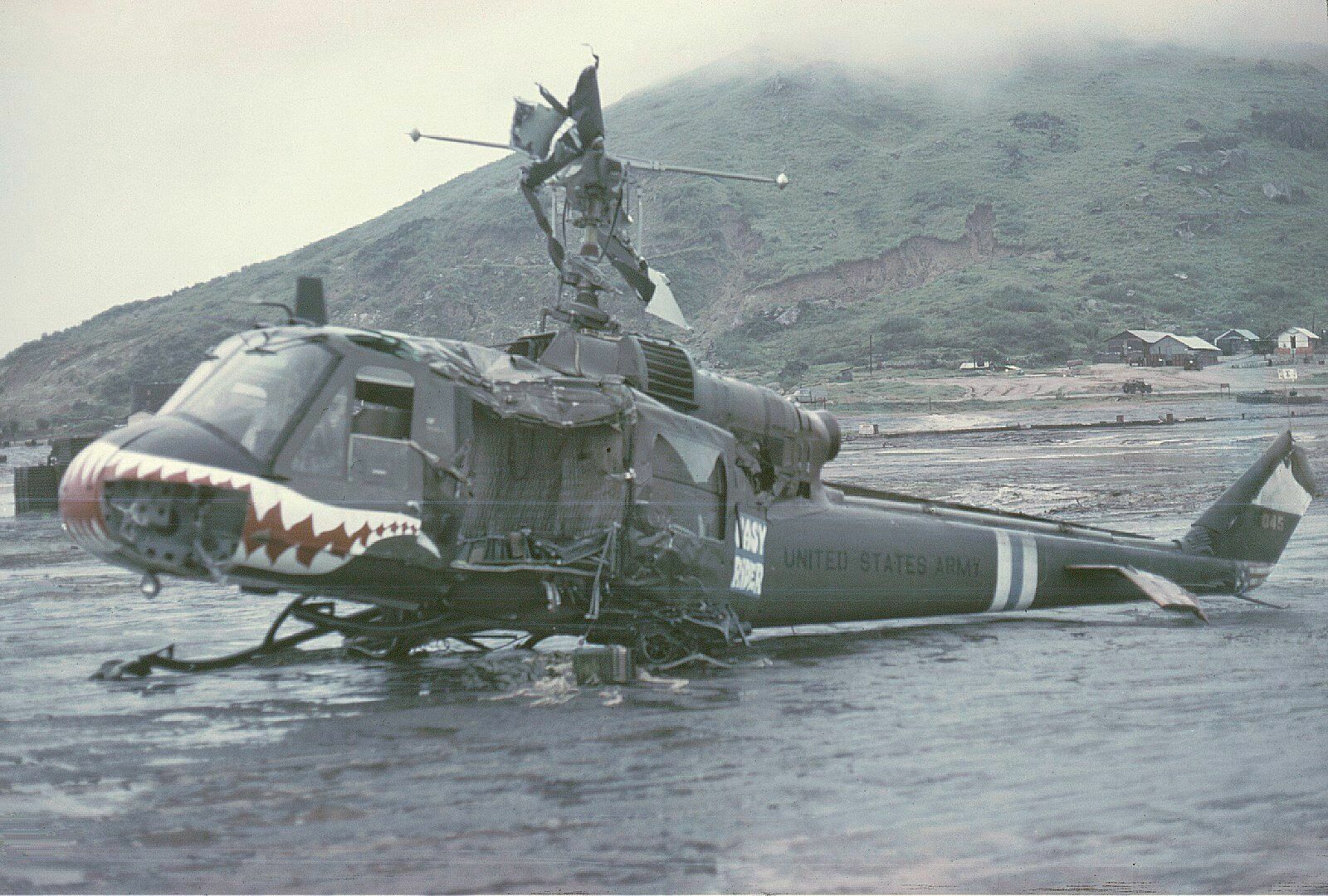
Another glimpse- photo by 1Lt. Bob Hackett
![]() Return to top of: 1970 page.
Return to top of: 1970 page.
![]() Return to top of: Home Page.
Return to top of: Home Page.
